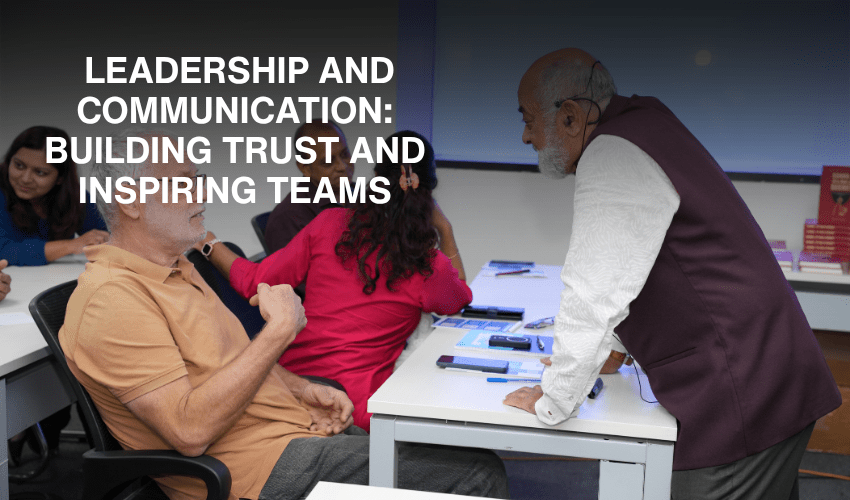
There’s a saying I often share with emerging leaders: “Leadership is less about being the smartest in the room and more about being the clearest, calmest, and most intentional communicator.”
Effective leadership and communication are inseparable. A leader may have brilliant ideas, strategy, and expertise, but without the ability to inspire, influence, and connect, that potential never translates into impact. Your ability to communicate determines the culture you create, the trust you earn, and the team you inspire.
I’ve seen technically brilliant professionals struggle to motivate their teams simply because they didn’t follow simple points.
Leadership Qualities Demands
Leadership Qualities Demands
- Clarity in Vision – A leader articulates not just tasks, but purpose, connecting every role to the bigger picture.
- Empathy and Emotional Intelligence – Understanding team members’ emotions strengthens connection and fosters loyalty.
- Consistency and Reliability – Leaders who say what they mean and follow through build credibility.
- Feedback with Intent – Giving constructive guidance and receiving input gracefully cultivates growth.
Think of these qualities as the foundation of trust. Without them, even the best strategies fail to gain traction.
Leader Communication: Techniques That Inspire Teams
Leader communication is a skill, but one that can be practiced and mastered. Here are techniques that truly elevate leadership:
- The Pause Principle – Always pause before speaking. This demonstrates thoughtfulness and prevents reactive behavior.
- Storytelling for Impact – Facts inform; stories inspire. Share narratives that connect vision with human experience.
- Structured Messaging – Organize your thoughts into beginning, middle, and end to ensure clarity.
- Mirror and Match – Subtly align tone, body language, and energy with your audience to build rapport.
- NLP Techniques – Using NLP tools like reframing, anchoring, and pattern recognition can increase persuasion, influence, and alignment across teams.
I often mentor leaders to visualize challenging conversations before they occur. One executive I coached dreaded a difficult team feedback session. Using NLP anchoring and visualization, he prepared himself mentally, paused, listened deeply, and responded calmly. By the end of the meeting, his team felt heard, motivated, and aligned,a transformation that would not have happened without intentional communication.
Building Trust Through Leadership and Communication
Trust is the currency of leadership. Teams follow leaders who:
- Demonstrate reliability through consistent words and actions.
- Make each member feel seen, heard, and valued.
- Align their communication with organizational values and vision.
When leaders embrace, respond, don’t react, conflicts de-escalate, collaboration improves, and engagement thrives. Trust grows not only from decisions made, but from the way those decisions are communicated.
The Power of Speaking Last
I once worked with a young team lead in a startup. During meetings, he often interrupted others, thinking he was helping clarify points. His team, however, felt unheard and disengaged. I advised him: “Listen first. Let them finish. Speak last.”
The transformation was remarkable. By letting his team share fully before he spoke, he not only earned respect but also discovered insights he would have otherwise missed. His final words became valued guidance rather than directives,demonstrating how good leaders speak last.
Real-Life Examples of Leadership and Communication
- In Teams: Summarizing everyone’s viewpoints before decision-making fosters ownership and alignment.
- In Client Interactions: Listening and responding thoughtfully builds credibility faster than dominating the conversation.
- In Personal Mentorship: Parents and mentors who explain the “why” rather than issuing commands cultivate understanding and long-term alignment.
A corporate executive I guided struggled to get buy-in from his senior team. By using storytelling, NLP reframing, and pausing to respond thoughtfully, he transformed meetings from debates into collaborative sessions, earning both trust and commitment.
Cultivating Leadership Communication as a Habit
Effective leadership and communication require discipline. Daily practices include:
- Reflecting on interactions – Identify what worked and what can improve.
- Intentional conversations – Start dialogues with curiosity, not judgment.
- Visualization and Journaling – Mentally rehearse key conversations and write insights for clarity.
- Morning Rituals – A combination of reflection, writing, and one meaningful conversation sets a powerful tone for the day.
By consistently practicing these habits, leaders communicate with purpose, influence, and authenticity.
Final Word: Leadership and Communication Matter
Leadership and communication are inseparable. They create trust, inspire teams, and turn vision into reality. Remember: your influence is not measured solely by what you know, but by how powerfully you communicate it.
Invest in your communication, integrate NLP tools, and embrace all the points we discussed above. These practices transform managers into true, inspiring leaders.
About Coach Girish Konkar
Cdr. Girish Konkar (Retd.) is a former Indian Navy Submarine Commander turned Leadership & Transformation Coach with over 40 years of experience across military and corporate arenas.
As CEO of Beyond Horizons, he blends experiential tools like NLP, Psych-K®, etc. with strategic insight to empower authentic, resilient leaders. He now dedicates his journey to guiding professionals and organizations toward purposeful leadership, growth, and lasting impact.





